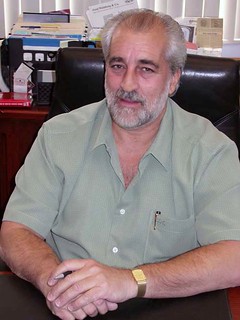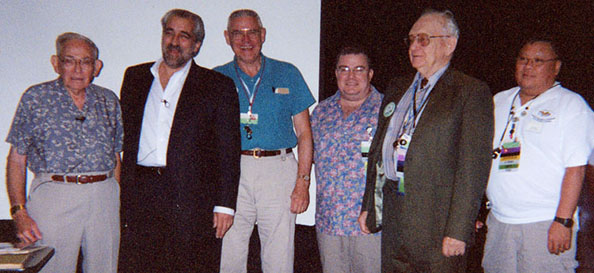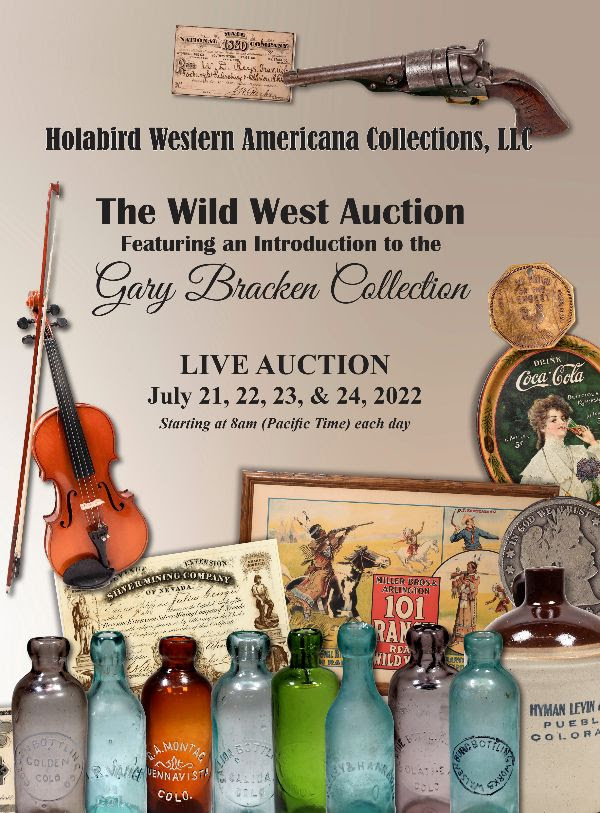
PREV ARTICLE
NEXT ARTICLE
FULL ISSUE
PREV FULL ISSUE
V25 2022 INDEX E-SYLUM ARCHIVE FRED WEINBERG INTERVIEW, PART ONEPublished in two parts across two different ErrorScope issues earlier this year, Greg Bennick's interview with dealer and longtime E-Sylum supporter Fred Weinberg is a wonderful look at the hobby and business of error coin collecting over the last half century. With permission from the Combined Organization of Numismatic Error Collectors of America (CONECA), we're republishing it in four parts over as many weeks. Here's part one, where Fred discusses how he got started dealing in errors. -Editor
Fred Weinberg Interview
Greg Bennick: So, tell me: why errors? With all the things out there to collect, what's the allure of errors to you as a specialty? What's fascinated you most about them?
Fred Weinberg: When I started out collecting, as a Cub Scout, I did both stamps and coins. I always thought
coins were cooler. When I was 10 or 11 years old, I started finding odd things on coins like a lot of people do.
Things that just looked different. I would examine them with a magnifying glass and try to figure out what they
were. Was it a lamination, was it a die crack, was it a scratch…what was it? I was already a subscriber to Coin
World, and one of the first things I did every week when I got Coin World in the mail was to turn to the very last
page to the Also, at that time I was starting to read about parapsychology and ESP and strange things, and I just thought errors were kind of like the flying saucers, or the ESP subject, of numismatics. So that always interested me also. I learned over a period of years about the minting process, and especially so when I started going to the Error Club of Hollywood meetings in 1967, which was about six or seven years after I started collecting. Greg Bennick: What was it about coins that attracted you? Fred Weinberg: Stamps just didn't really excite me although they were colorful. I thought coins had more heft. They were made out of metal, and they weighed something. And more importantly I had access to them. I had a paper route, like a lot of kids did in the 60s, and I would collect 25 cents a month at the end of the month from at least a few hundred people to whom I'd delivered the local newspaper. I'd come home and just dump out all these coins on my little desk in my room and start to go through them. Maybe I would pull out a silver coin, or a lot of times there was a foreign coin that somebody tried to slip in. Interestingly enough, one of the things that really got me motivated was the time I came home one night, this would have been in the winter, around 1962 or 1963 at the latest and had that big pile of coins on my desk and there was an 1882 $10 gold piece that somebody had given me. They probably gave it to me as a foreign coin. I found that when I collected and it was dark outside, I got more foreign coins than when I collected the change in the summertime and it was lighter outside. People either on purpose or by accident would give me those foreign coins. So, someone had given me an 1882 $10 gold piece. There was no way I could return it because I had no idea who amongst the few hundred people might have given it to me. That was likely the first time I ever held and touched a gold coin. A couple of years later when the 1964 Kennedy Proof Sets came out, they were issued for $2.10 each by the US Mint. And they immediately went up to about $20 or $22 per set because of Kennedy's popularity, and also the fact that the mint had announced that they weren't going to make any more silver coins. In my first bad trade deal that I can remember, I went into my local coin shop and I traded that 1882 $10 gold piece straight across for a 1964 Kennedy Proof Set. The Proof Set today is worth $20 or so, and the gold coin's worth probably $900 or $950. So, I tell people, keep the gold, don't buy modern issues (laughs). Greg Bennick: That's amazing! And it leads into my next question. I'm curious about your first error coin. Is it true that the first error coin you bought was a fake, as I read in a very early issue of ErrorScope? Fred Weinberg: Yes, that's true. There was a coin store on Fairfax Boulevard in Los Angeles. My mother took me there one day, and I said I was interested in errors. He had a 1941 nickel that was impressed on the reverse, backwards of course, with a penny. It was a 1940 or 1950 something penny. I was about 10 years old, maybe 11, and I bought that coin for about $4. It took me about a year and a half or so to figure out that it was what I call a sandwich coin. Somebody just pressed another coin into the nickel. I've always thought over the decades that dealer -- who I didn't see for many years after that -- knew what it was and didn't care. Because it was pretty obvious what it was once I started learning about the minting process. I was very lucky, because I got to learn the minting process from some of the great people in the error hobby from the 1950's and 60's. Greg Bennick: Given that you got burned on your first error coin purchase (and I know that's happened to me certainly as well over the years) was that experience discouraging? What errors got you motivated? Fred Weinberg: Well, I wouldn't say that I was discouraged. I was probably a little more upset with myself that I got taken in. But I let it slide. As far as what errors motivated me, that's tough, because before the first Error- A-Rama, which was held in Hollywood in June of 1967, my only access to errors would have either been a local coin shop - I wasn't even old enough to go to the Long Beach coin show at that point - or reading Collector's Clearinghouse in Coin World, or the page or two about errors which would appear from time to time in CoinAge magazine, or something like that. I really wasn't exposed to actual coins, aside from photographs of errors, until I started going to the local club meetings in 1967. Greg Bennick: What were the local club meetings like? You must have been the youngest person there! Fred Weinberg: In 1967, I had just turned 17 and believe it or not, I wasn't the youngest! I was among the youngest, but the Wallaces who I met for the first time at the Error Club of Hollywood, and then of course saw them at the Orange County Error Club, were younger than me. Donnie, Debbie, and Susan. There were two sisters and a brother, and Don and Evelyne Wallace were their parents. They owned the Wallace Trade Bindery who ended up publishing ErrorScope for many, many years. So, I was among the youngest, but I wasn't quite the youngest. At the time, there were probably, oh I would say, a half a dozen high school-ish, and maybe even college kids going to those meetings. But most of the meetings were attended by adults from West Los Angeles, Hollywood, you know, the general southern California area. Greg Bennick: And this was an actual error specific club in Hollywood? Fred Weinberg: Yeah, Mort Goodman started it with a guy named Si Kaufman from Culver City. It was after the first Error-A-Rama that was put on at the Hollywood Roosevelt Hotel on Hollywood Boulevard. Because of the success of the Error-A-Rama, they'd started the Error Club of Hollywood. So it was quite exciting to every month drive up to Hollywood and there would be 30 or 40, mostly adults, sitting in the audience and we'd talk and they'd have lottery games and a presentation and a little trading, and it was wonderful. I learned a lot about the minting process from some of the experts like Mort Goodman. Syd Kass would come down on a rare occasion from Stockton. And right now I'm probably one of the few people alive that remembers meeting and spending time with Blakesley, who of course is very famous for his Blakesley effect on clipped planchets of all different types. He was a very interesting person.
For more information about CONECA, see:
Wayne Homren, Editor The Numismatic Bibliomania Society is a non-profit organization promoting numismatic literature. See our web site at coinbooks.org. To submit items for publication in The E-Sylum, write to the Editor at this address: whomren@gmail.com To subscribe go to: https://my.binhost.com/lists/listinfo/esylum All Rights Reserved. NBS Home Page Contact the NBS webmaster 
|


